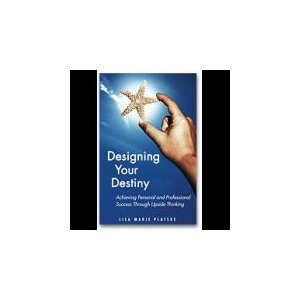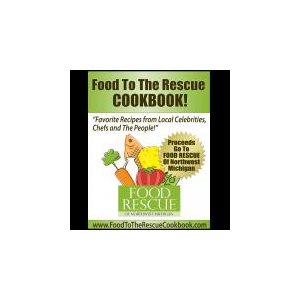Free to Eat: the Proven Recipe for Permanent Weight Loss
Free to Eat is what Americans are waiting for: simple secrets that will cause them to lose weight permanently—and painlessly. There is nothing to memorize, count or worry about, because it is based on years of scientific literature. Free to Eat empowers readers to change their eating behaviors by offering realistic and practical steps that work—including over 50 recipes and a 30-day meal plan.
Book Trailer
http://www.youtube.com/watch?v=1DnT0_wBKGMThe Story Behind This Book
As with many a great notion, the idea came to nutritionist Bronwyn Schweigerdt while she was doing something totally unrelated to her work. "I was rock climbing," Schweigerdt says, "and I was doing one where you're basically horizontal. I'm hanging there upside down thinking, 'There needs to be a female superhero. There needs to be Fiber Girl. That's it!' "I saw myself wearing a cape and a unitard. I thought, 'I need to be that woman.' " And so a superhero was born. Schweigerdt, who holds a master's in nutrition from Tufts University in Massachusetts, has taught at Sacramento City College and has run numerous corporate dietary seminars, shed her academic persona and donned a cape and a blue unitard with a big yellow "F" emblazoned on her chest. OK, so she only did it once – for an entertaining YouTube video promoting fiber and her self-published book, "Free To Eat" ($14.95, available at www.fiber-girl.com). Schweigerdt sees herself as something of an obesity avenger, a tireless fighter who battles poor diets while promoting truth, justice and a high-fiber diet. Faster than you can say "Wilfred Brimley," Schweigerdt launches into an impassioned, convincing monologue. She credits increased fiber in one's diet with everything from reducing diabetes risk by lowering blood sugar to improving the health of the digestive tract, lowering cholesterol, regulating gallbladder bile, retarding autoimmune diseases … you get the point. Skeptics might ask, "Whoa – can fiber do all that?" Then – Pow! – she delivers the knockout blow: weight loss. "Fiber is filling, and soluble fiber binds with water and expands in your stomach," she says. "You can't overeat with fiber." And because fiber is a carbohydrate not easily absorbed in your system, "fiber calories go out the back door and, flush, they're gone," as Schweigerdt delicately puts it in her book. The popularity of high-fiber diets has waxed and waned in the past few decades. The problem with fiber is that it doesn't have the quick-fix appeal or the Hollywood star power of the Atkins or South Beach diets. Fiber? Sounds like something Grandma sprinkles on her cottage cheese. In reality, high-fiber diets have been recommended not just for those seeking to lose weight but for everyone who wants better health and more energy. Only recently has it entered the public consciousness that Americans are fiber-deprived. The American Dietetic Association recommends daily fiber intake of 25 grams for women and 38 for men. But according to registered dietitian Tanya Zuckerbrot, author of "The F-Factor Diet," most people consume only 11 grams a day. Some researchers have recommended consuming even more fiber to achieve weight loss. A study by Susan Roberts at Tufts University's Energy Metabolism Laboratory showed that women who ate 35 to 45 grams of fiber a day were less hungry while losing weight and therefore less apt to fall off the diet wagon. Lately, makers of processed foods have discovered the value (and marketing potential) of fiber and have injected fiber powder into numerous foods, ranging from yogurt to Pop-Tarts. And anyone who tunes in to daytime TV can't help but see those ubiquitous Metamucil commercials. But researchers say the most nutritious (and expedient) way to consume fiber is by eating an array of fruits, vegetables, whole grains, nuts and legumes. "If you eat a bean burrito for lunch, that'll fill you up with fiber for five hours," Schweigerdt says. "You can't overeat bean burritos." A black bean burrito with a whole wheat tortilla and avocado slices contains about 15 grams of fiber, nearly half the recommended daily amount for women. "Avocados usually surprise people; (they've) got 6 to 8 grams of fiber," Schweigerdt says. "We've always been told it's fat. But it's 'good' fat in moderation. And really, how many avocados can you eat at one time without getting sick? "Most people are blown away with how much fiber is in nuts. They've always been told almonds and walnuts are fattening. Popcorn. Artichoke hearts – people always get excited about that one. Add it to your salad, pasta dish, pizza." The cliché is that fiber comes only in prunes and bran cereal. In truth, fiber shows up in foods as varied as apples, broccoli, peanuts and whole-wheat bagels. Don't tell Schweigerdt that you can't get enough fiber in your diet without resorting to supplements. She uses herself as an example. "So for breakfast today, I ate oatmeal with flaxseed, walnuts, raisins, dried coconut, cinnamon and honey mixed in – that's about 8 grams (of fiber)," she says. "For lunch, I had an apple, and a peanut butter and jelly sandwich on whole grain bread – another 8 to 10 grams. For dinner, I'll have lentil soup I made myself and whole-grain bread – another 8 grams. "And I snack on nuts like almonds or popcorn. That's more fiber." After consuming all that, Schweigerdt says she feels full but not bloated. Good thing, too, because that Fiber Girl costume is very form-fitting.













